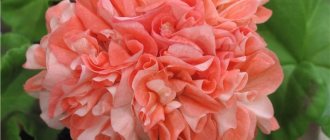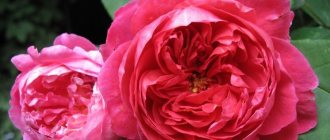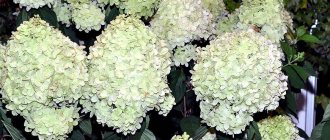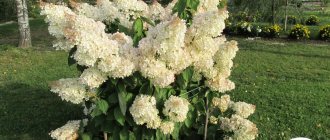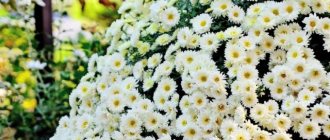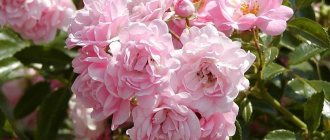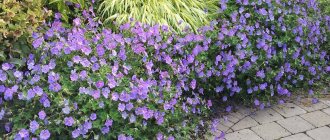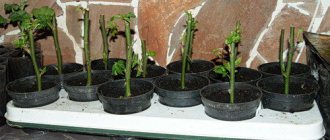Lavender is an unpretentious and incredibly sophisticated subshrub, found in its natural environment most often in the mountainous areas of the Mediterranean.
The plant has a number of positive qualities: delicate beauty, amazing fragrance, beneficial properties. Caring for lavender does not cause much trouble, and there are a lot of advantages from owning this plant.
Environmental requirements
Lavender requires plenty of sun , well-drained soil and excellent air circulation. The bed for the crop is prepared in advance by digging up the soil using a spade, adding a little compost and wood ash. The seedlings are planted in a permanent place when the danger of frost typical for the area has passed. Lavender doesn't need a lot of water. Between irrigations, allow the soil to dry thoroughly before watering again.
In autumn, young grass shoots are cut to 2/3 of the length of the stem, avoiding touching old branches. If the gardener lives in an area where there is little snow, then the plants need to be additionally covered with straw or dry leaves, and then with burlap. This will protect frost-resistant lavender from dry winds and extremely low temperatures. In the spring, when it gets warmer, the burlap and mulch are removed.
Reproduction methods
To plant a plant you will need:
- fertilizer;
- the soil;
- ripper or cultivator;
- shovel;
- rake;
- containers.
There are 4 main methods of propagation: cuttings, sowing seeds, layering and division. The first 3 are considered the best options for various situations, and the division is only a backup. Cuttings are a convenient method of obtaining seedlings for planting bushes in large quantities. The idea is to cut shoots 8-10 cm long for intermediate rooting in a mixture of sand and peat. Reproduction by layering can be natural or artificial. Even with the second option, the likelihood of injuring the bush is minimized. The daughter bush is dug up when shoots form. Growing from seeds is not the easiest way. The seedlings will not bloom soon, and constant monitoring of the temperature regime for the seeds will be required. Reproduction by division is important if for some reason other methods are not suitable. The bush is prepared in the fall, and the procedure is performed only a year later.
Cuttings
To do this, take young woody shoots of a healthy annual bush. The inflorescence is cut from the cuttings and the lower leaves are removed to a height of 3-4 cm. Ideally, stems that have not yet had time to bloom are used. For cuttings, prepare dry sand, soil, clay shards and medium pots. The shards are placed at the bottom of the pot, and a layer of already moistened sand is placed on top. The soil is then poured onto the drainage layer and everything is compacted. Another layer of wet sand is made on top - 1.5 cm thick. The soil itself is prepared from several components. Sand, sheet and turf are used in equal proportions. The prepared cuttings are treated with growth stimulants and the cleaned side is buried in the ground. Rooting is improved by “massaging” the lower part of the shoot. Sometimes they organize a mini-greenhouse: the lavender is carefully covered with plastic wrap.
Seeds
At the first stage, stratification is carried out: the seeds are kept at low temperatures. In this sense, there are 2 ways. In regions where the end of autumn is not accompanied by frost, the sprouts are simply planted in cold soil. The seeds will not be damaged by light frosts. To avoid risk, the method of artificial stratification is chosen. The sprouts are mixed with sand and poured into a glass. Then they hide it in a bag and store it in the refrigerator for about a month and a half, or better yet, two to two and a half. The speed of emergence of seedlings depends on this. The rudiments are sown at the end of winter or spring. In the first case, they are planted in boxes, and in the second - in outdoor greenhouses. Flowering will occur no earlier than in a year. For the first 12 months, the seedlings will only develop and grow roots. Sometimes you have to wait 2 years for the appearance of inflorescences, in rare cases - 3 or more.
By layering
Reproduction by air layering is used in the cold season of spring, that is, at maximum air humidity. To implement this method, you do not need to purchase seeds or prepare cuttings. The principle is as follows: on an adult bush, select the oldest branch (always alive), cut off the bud and lower the end of the branch into a small dug hole. The shoot is sprinkled with soil on top to secure it. The resulting hump is watered once every two days. 5-7 days after planting, it is fertilized. It happens that the stem springs. Then it is secured with a stone or a pin, and additionally covered with earth. Reproduction by air layering can be done naturally. If you look under the bush of an adult plant, you will most likely find several sprouts there. This is a kind of self-seeding of lavender.
Dividing the bush
Lavender does not tolerate division well, so this method is resorted to last. The bush should be divided in early spring, before the active growth season begins. Careful selection will be required. A cluster is isolated from one section of the rhizome. Then they dig holes 30 cm deep and 2 earthen clods wide. The bottom of the hole is filled with soil saturated with useful elements. Sometimes they add eight centimeters of pine bark. The fertilizer chosen is potassium-phosphorus. If the bush is small and the middle shoot is alive, then in order to find out the condition of all areas, you can dig up the lavender completely for a while. Dividing is done with a shovel, and distant areas are pulled apart with two forks. Plants are sometimes divided into several parts and all planted in new holes. The same depth as the first donor plant. Some important tips:
- sacrificing an entire plant to create a dozen new ones is only possible if the main plant is at least three, or even better, five years old;
- After dividing, you need to care for a healthy bush without any changes.
Practical uses of lavender
This herbaceous plant is grown for several reasons. Lavender has medicinal properties, an intoxicating aroma, and flowers ranging from purple to white. Spectacular flowering continues throughout the summer season.
Lavender is also a honey plant whose flowers are loved by bees. From the collection of this nectar, unique honey is obtained.
A bag of lavender can repel moths from the linen closet and unwanted insects in the garden, and will also help a person get rid of insomnia. Dried buds can be used in cooking to add a unique yet spicy flavor to both savory and sweet dishes.
Herbal lavender teas help you relax, and essential oils help heal damaged skin.
Botanical portrait
The genus Lavandula of the family Lamiaceae or Lamiaceae includes 47 species of annual or perennial herbaceous plants or shrubs.
Lavender has a powerful woody root, going almost 2 m deep, and branched stems, slightly woody at the bottom.
The shape of the leaf blades of different plants of the genus differs - some have simple leaves, others have pinnate-toothed leaves, and some have slightly dissected leaves.
Almost all representatives of the genus have pubescence on the foliage, stems and petioles, giving them a silvery-green tint; many have glands containing essential oils.
Flowers in whorls of 6-10 pieces, blue-lilac, blue or blue-violet, are collected in an inflorescence-spike on the tops of leafless upper stems.
They bloom in the second half of summer, collecting swarms of bees. Seeds remain viable for a long period - up to several years.
Types of Lavender
The most frost-resistant variety of English lavender is Lavandula angustifolia. It blooms earlier than other representatives of the species and has short stems. Its flowers have a sweeter aroma, but contain less camphor in the essential oils.
The second type of lavender that can overwinter in the middle zone is Lavandin X, a hybrid of Lavender angustifolia and the slightly less frost-hardy Lavandula spicata. The Lavandin X hybrid features taller flower stems and larger plants, as well as slightly delayed flowering. The essential oil contains a large percentage of camphor, which gives the plantings a stronger, sharper and cleaner smell.
Both the above mentioned types have many varieties bred and selected for quality characteristics and purpose.
They are mainly used:
• for filling sachets with dried buds;
• making dried bouquets;
• as a culinary spice;
• in the form of essential oil extracts;
• like beautiful garden flowers.
English varieties of lavender
'Munstead' is the hardiest variety and has light purple flowers with narrow green foliage. It can be propagated by seeds, stem cuttings, or purchased young plants from a nursery. This variety grows to 30-45 cm in height and, once established, will not require much care other than snowy winter protection. Lavender is a versatile plant with a strong aroma, but its stems are often twisted. Therefore, it is more suitable for drying flowers and buds than stems. Manstead easily tolerates winter temperatures in the range of -10 ... -23°C.
'Hidicote' is also very frost hardy. It has straight stems (medium to long) and is excellent for cutting. The foliage of the variety is gray, and the flowers are more purple than blue. The bush is lower than "Munstead", the maximum height is only about 28 cm. Its petals have a deep, rich color, so the variety is often used for drying, since after this the brightness is preserved almost in its original form. Even after drying, the flowers and stems continue to emit a delicate, sweet lavender scent. Resistant to frosty winters (-15...-22°C) , but prefers reliable snow cover or additional winter protection.
'Twickle Purple' is a lavender English lavender with a very long stem. The variety is one of the most cold-resistant varieties with long branches. It has a wonderful smell and is an excellent honey plant. 'Twickle Purple' is taller and more showy than 'Munstead' and has clumps of beautiful lavender inflorescences that look great in the garden. The long stems are suitable for drying or using lavender sprigs for bouquets. The variety has one drawback: after drying, the color of the petals fades greatly.
"Phenomenal" is a new hybrid of cold-resistant lavender, which is cultivated in frosty climates. Its bushes grow much taller than 'Hidicote' or 'Munstead', reaching a height of 60-85 cm. 'Phenomenal' has silvery foliage with violet-blue flowers and a bush form very similar to French lavender. It contains the largest amount of essential oil of any lavender variety and is an excellent honey plant. The variety is good for use in fresh or dried flower arrangements. Although Phenomenal enjoys hot, humid summers, it is also very tolerant of cold temperatures, especially if it has reliable snow cover. If the thermometer constantly drops down and frosts intensify, it is recommended to provide the plant with additional shelter. For a stunning flowerbed look, plant several varieties of lavender side by side, placing 'Phenomenal' at the back, 'Munstead' in the middle and 'Hidicote' at the front. “Phenomenal” seedlings should be spaced 100 cm apart from each other, “Munstead” plants should be spaced 50 cm apart, and “Hidicota” plants should be spaced 30 cm apart. During flowering, together they form a magnificent combination of shades from blue to lilac.
Lavender angustifolia 'Little Lottie' is a dwarf variety of English lavender that grows to about 30cm in height. The variety has pale, purplish-pink flowers set above green-gray foliage. Winter hardiness is not bad, but low-growing grass is intended for growing in a hanging basket; it is recommended to bring it, along with the pot, into a room with above-zero temperatures for the winter. When grown in open ground, “Kroshka Lotta” can withstand frosts in the range of -5...-7°C.
Lavender angustifolia “Lady Anne” is a compact variety of English lavender, the maximum height of the bush is approximately 45 cm. The flowers are pale pink with a light, unobtrusive aroma. When planted in open ground, “Lady Anna” combines well with medium-sized varieties, having purple buds. Without shelter it overwinters at frosts no higher than -3...-5°C.
Lavender angustifolia "Lullaby Blue" - the bush is strewn with rich purple-blue flowers. Plants reach about 60cm in height, making this a good choice if you need a flower hedge along paths. It is an excellent honey plant, frost resistance is low down to -5°C. With good winter shelter, it can be grown in areas where winters down to -20°C are not uncommon.
Pests and diseases
Thanks to the aroma with which the plant repels many garden pests, lavender is resistant to most parasitic insects.
However, she is not completely immune from their attacks: leafhoppers and slobbering pennies have been spotted on the bushes; bronze beetles also do not disdain the fragrant inflorescences of lavender, although they do not cause significant harm.
Due to excessive moisture, the perennial is susceptible to gray rot.
If rotten areas of stems appear inside the bushes, cancel watering, if any.
Damaged pagons are removed, the bushes are thinned out to increase air access.
In case of extensive lesions, the bushes are cut out completely to the root collar.
If it does not have time to rot, it will produce new shoots.
French varieties of lavender
Three Lavandin varieties are currently at the peak of popularity - Grosso, Provence and Fred Boutin.
"Grosso" is a good frost-resistant variety. Withstands temperatures down to -20°C, but only if there is good snow cover. In cold, snowless winters, it requires additional ground shelter, otherwise it may freeze to death. This plant grows smooth, long stems covered with purple flowers.
“Fred Butin” - the variety is resistant to moderate frosts (-10...-12°C). The plant has light-colored leaves and pale flowers. It is highly decorative, thanks to which it perfectly fills free areas in the garden. It prefers mild winters, so you should not try to grow the variety without shelter further than the middle zone.
"Provence" - This is Lavandin X with a long stem, which is bred in order to collect the inflorescences after drying. Has an amazing aroma. Its amazing buds are used in “Herbs de Provence”, and the dried buds are the most aromatic of all known varieties. Does not tolerate severe frosts well. Without shelter, winter losses from plant death are 40-95%. Suitable for growing in milder climatic conditions, for example in Crimea or Krasnodar. Frost resistance in the region -5...-7°C.
Lavandula stoechas Willow Vale is a powerful variety of French lavender with stunning clusters of purple flowers. It has large and characteristic bracts. The flowers are used for drying and are removed from the plant as soon as the buds open. When planted in secluded places protected from northern winds, it grows without additional insulation, withstanding winters down to -10°C.
“Fathead” is a vigorous French variety with a pronounced, pleasant aroma, good for drying. As a garden bed, it prefers sunny, weather-protected places with well-drained and aerated soil. The inflorescences of this variety are rich in nectar and are an excellent honey plant. Combining the production of raw materials for the cosmetics industry with beekeeping, Fathead plantations have apiaries nearby. Winter hardiness is good. The variety is recommended for temperate climates.
How to let lavender overwinter without loss
Lavender needs well-drained soil. Without this, the melting winter snow will saturate the soil and kill the plant. Planting on a slope or installing drainage under the bed (beds of sand and gravel), as well as planting a plantation on a hill, will allow you to grow lavender on heavy clay soils.
The deeper the snow cover, the better. You can additionally throw snow on the lavender bed. Plants are warm under the snow; the temperature under such shelter never drops below zero. Mulching with straw or spruce branches can also help.
When setting up a plantation, you should choose a place protected from the wind, which will significantly reduce the likelihood of the plantings freezing. You should also remember that plants grow better in the ground than in pots. The soil in containers freezes quickly, so the root system may die.
